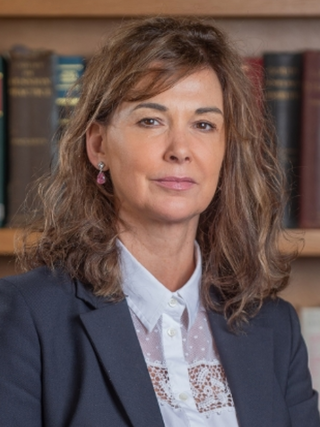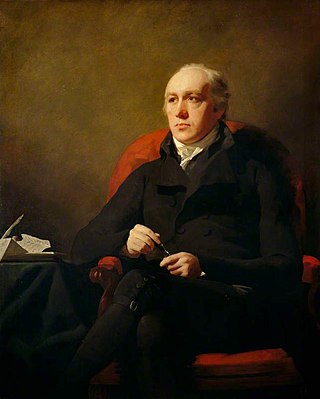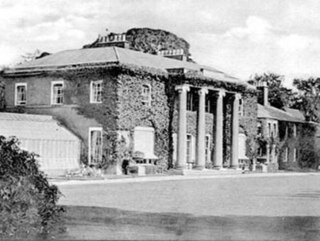
Henry Dundas, 1st Viscount Melville, PC, FRSE, styled as Lord Melville from 1802, was the trusted lieutenant of British prime minister William Pitt and the most powerful politician in Scotland in the late 18th century.

His Majesty's Advocate, known as the Lord Advocate, is the principal legal adviser of both the Scottish Government and the Crown in Scotland for civil and criminal matters that fall within the devolved powers of the Scottish Parliament. The Lord Advocate provides legal advice to the government on its responsibilities, policies, legislation and advising on the legal implications of any proposals brought forward by the government. The Lord Advocate is responsible for all legal advice which is given to the Scottish Government.

David Hartley the Younger was an English statesman, a scientific inventor and the son of the philosopher David Hartley. He was Member of Parliament (MP) for Kingston upon Hull, and also held the position of His Britannic Majesty's Minister Plenipotentiary, appointed by King George III to treat with the United States of America as to American independence and other issues after the American Revolution. He was a signatory to the 1783 Treaty of Paris, which ended the American Revolutionary War. Hartley was the first MP to put the case for abolition of the slave trade before the House of Commons, moving a resolution in 1776 that "the slave trade is contrary to the laws of God and the rights of men".

Calton Hill is a hill in central Edinburgh, Scotland, situated beyond the east end of Princes Street and included in the city's UNESCO World Heritage Site. Views of, and from, the hill are often used in photographs and paintings of the city.

James Craig was a Scottish architect who worked mostly in lowlands of the country and especially his native city of Edinburgh. He is remembered primarily for his layout of the first Edinburgh New Town.

Charles Hope, The Rt Hon. the Lord Granton FRSE was a Scottish politician and judge.
The Bannatyne Club, named in honour of George Bannatyne and his famous anthology of Scots literature the Bannatyne Manuscript, was a text publication society founded by Sir Walter Scott to print rare works of Scottish interest, whether in history, poetry, or general literature. The club was established in 1823 and printed 116 volumes before being dissolved in 1861.

This article is a timeline of the history of Edinburgh, Scotland, up to the present day. It traces its rise from an early hill fort and later royal residence to the bustling city and capital of Scotland that it is today.
The New Town is a central area of Edinburgh, the capital of Scotland. It was built in stages between 1767 and around 1850, and retains much of its original neo-classical and Georgian period architecture. Its best known street is Princes Street, facing Edinburgh Castle and the Old Town across the geological depression of the former Nor Loch. Together with the West End, the New Town was designated a UNESCO World Heritage Site alongside the Old Town in 1995. The area is also famed for the New Town Gardens, a heritage designation since March 2001.

Old College is a late 18th-century to early 19th-century building of the University of Edinburgh, Scotland. It is located on South Bridge, and presently houses parts of the University's administration, the University of Edinburgh School of Law, and the Talbot Rice Gallery.

John Gellibrand Hubbard, 1st Baron Addington PC, was a City of London financier and a Conservative Party politician.
Thomas Marlay was an Irish politician and judge, who ended his career as Lord Chief Justice of Ireland. He is remembered chiefly for beginning the rebuilding of Celbridge Abbey, and as the grandfather of the statesman Henry Grattan.

Thomas Hardy FRSE was a Scottish Minister, Moderator of the General Assembly of the Church of Scotland in 1793 and Professor of Eccesiastical History at Edinburgh University. He was also Dean of the Chapel Royal and Chaplain in Ordinary to the King.

Digswell House is a Grade II listed Mansion in Hertfordshire, erected c. 1805–07 by Samuel Wyatt for the Honourable Edward Spencer Cowper, who lived there for some years. It was built in the parish of Digswell from which it takes its name, but was transferred to Welwyn Garden City in 1921. The house is now in the Knightsfield area of Welwyn Garden City. The current house was erected a little eastward of the site on which its predecessor had stood and was built as a commodious country gentleman's home, in an architectural style that can best be described as neoclassical. A portico, with four massive Ionic columns, on the south front is its most impressive external feature.
The 1903 Birthday Honours were announced on 9 November 1903, to celebrate the birthday of King Edward VII that day. The list included appointments to various orders and honours of the United Kingdom and the British Empire.

Order of Little Bedlam aka Bedlam Club was a gentlemen's drinking club, founded in 1684 by John Cecil, 5th Earl of Exeter of Burghley House, and lapsing on his death in 1700. In 1705 it was reconvened by his son, John Cecil, 6th Earl of Exeter as grand master ‘Lion’, his brother William as ‘Panther’ and brother Charles as ‘Bull’. Each member of the club had his portrait painted and was associated with a particular animal. The venue of the Club is thought to be "The Bull and Swan" at Stamford, Lincolnshire. The Billiard Room at Burghley House still displays six oval portraits of members of the 5th Earl’s drinking club.
Events from the year 1816 in Scotland.
The 1920 Birthday Honours were appointments by King George V to various orders and honours to reward and highlight good works by citizens of the British Empire. The appointments were made to celebrate the official birthday of The King, and were published in The London Gazette on 4 June 1920.

The 1895 Prime Minister's Resignation Honours were announced in the British national press on 1 July 1895 following the resignation of Lord Rosebery's government on 22 June. The appointments to the Order of the Bath appeared officially in the London Gazette of 2 July.
Sir John Ramsden, 4th Baronet was an English landowner and Member of Parliament.














